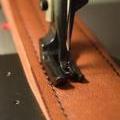-
terrahyd's Blog
-
Johanna's Blog
-
joet's Blog
-
CitizenKate's Blog
-
Badlands Leather Art
-
broncobuster's Blog
-
That boys not right.
-
Cow Camp Saddlery
-
3DArcher's Blog
-
rdb's Bench Notes
-
nopension's Blog
-
leatherman1457's Blog
-
Wizs' Leather Work and Sewing Machine Blog
-
Bob Stelmack's Blog
-
dawn's leather Blog
-
Dusty chap Leather Blog
-
Jbird's Blog
-
Tom Banwell
-
KnotHead's Blog
-
Fewments and Observations
-
rodeomic's Blog
-
joet's Blog
-
bvb knives' Blog
-
DAVID W's Blog
-
*
-
WyomingSlick's Tools and Tricks Blog
-
elkdog555's Blog
-
Leather Masks
-
elkdog555's Blog
-
Leatherimages' Blog
-
Leatherimages' Blog
-
WarEagle Leather Works' Blog
-
Cursos de salsa en Malaga
-
billio8's Blog
-
DJ1935's Blog
-
Heather R Nord's Blog
-
Heather R Nord's Blog
-
katsass' Blog
-
CarolinaTackMan's Blog
-
CarolinaTackMan's Blog
-
DGum's Blog
-
MaddCelt's Maddness
-
Chained Lightning's Blog
-
Chained Lightning's Blog
-
AnAce's Blog
-
AnAce's Blog
-
Information and Communication
-
kleefan's Blog
-
bentley's Blog
-
Painting Cow Studio Blog
-
Brent S. Tubre Custom Saddles
-
rambo's Blog
-
rambo's Blog
-
Fellowsgarden's Blog
-
Fellowsgarden's Blog
-
hacken94's Blog
-
MasterLeatherCraftsman's Blog
-
?
-
marine mp's Blog
-
marine mp's Blog
-
starving artist's Blog
-
drkuhn's Leather Blog
-
Roy Cook's Blog
-
Roy Cook's Blog
-
Roy Cook's Blog
-
Roy Cook's Blog
-
Roy Cook's Blog
-
GChordLeathers' Blog
-
8ball's Blog
-
Airship 67 Leather
-
DJordan's Blog
-
Chiwit Design Blog
-
chiwitdesign's Blog
-
diamondbleather's Blog
-
John Wayne's Blog
-
The Flying Ostrich's Blog
-
The Flying Ostrich's Blog
-
The Flying Ostrich's Blog
-
John D Dennehy's Blog
-
Damn Eskimo's Blog
-
Hollywood's Blog
-
darak's Blog
-
cottoncreek's Blog
-
Charlie K's Blog
-
Diane B's Blog
-
Kellog's Blog
-
landy's Blog
-
landy's Blog
-
OrchidNoir's Blog
-
withsilverbells stitch o' rama
-
Balto Joe's Blog
-
Davis Leatherworks
-
capsterdog's Blog
-
henry's Blog
-
john mattingly's Blog
-
hass' Blog
-
hass' Blog camo print
-
1911 Jerry's Blog
-
DWHarrelson's Blog
-
Zilla's Blog
-
Crazy K's Creations
-
flstenner's Blog
-
flstenner's Blog
-
cchichueng's Blog
-
aeinaleather's Blog
-
alagar's Blog
-
Cg Leather's Blog
-
Cg Leather's Blog
-
smileha's Blog
-
Salazar Leather's Blog
-
Salazar Leather's Blog
-
Jxtime blog
-
Freeze
-
Maverick Leather Company's Blog
-
Legacy Leathercraft's Blog
-
Legacy Leathercraft's Blog
-
leezza2's Blog
-
redsolara's Blog
-
fashiang's Blog
-
Tinneal's Leather Work Portfolio
-
Tinneal's Blog
-
sunnyfel's Blog
-
Quanr's Blog
-
Greybeard's Blog
-
bobocat's Blog
-
Cubezombie's Place
-
theprestigeshop's Blog
-
Colombian Leather Products
-
CJ leather Blog
-
Blackey Cole's Blog
-
TomWI's Blog
-
ayn's Blog
-
Jessica S' Blog
-
ayn's Blog
-
Leathercraft
-
Art's Blog
-
Armor boy's Blog
-
Armor boy's Blog
-
Ebay Blog
-
El Paso's Blog
-
El Paso's Blog
-
DoubleC's Blog
-
Tod Schertzer's Blog
-
Loot's Blog
-
eLw's Blog
-
MadMorbius' Blog
-
MadMorbius' Blog
-
Square Bear's Blog
-
Square Bear's Blog
-
WinterBear's Blog
-
shedhunter's Blog
-
mariobin's Blog
-
chipp's Blog
-
chipp's Blog
-
Miller02
-
Jimbob's Blog
-
Jimbob's Blog
-
gene l's Blog
-
gene l's Blog
-
tackmantoo's Blog
-
bluesman1951's Blog
-
bluesman1951's Blog
-
TMCARDS' Blog
-
TMCARDS' Blog
-
A Journey in Leather
-
SandSquid's Blog
-
maury sewing machinex's Blog
-
buckeroo1's Blog
-
terry and joanne's Blog
-
MirandaDee's Blog
-
leathersculptor's Blog
-
BILL FORBES' Blog
-
White Gate Leather LLC's Blog
-
White Gate Leather LLC's Blog
-
CicadaLeatherCompany's Blog
-
CicadaLeatherDesigns' Blog
-
metaljoe57's Blog
-
missdaisy2006's Blog
-
missdaisy2006's Blog
-
webothfarms' Blog
-
Wyldflower's Blog
-
wyldflower's Blog
-
Ryan Mitchell's Custom Leather Works Blog
-
BLUEGUN Store's Blog
-
stitchnwizard's Blog
-
Teja's Blog
-
vintage clothing lover's Blog
-
Ezio's Blog
-
Second Hand Cowboy Leather's Blog
-
jimmyo's Blog
-
jimmyo's Blog
-
jimmyo's Blog
-
hunio's Blog
-
Brooktx's Blog
-
Kurtman's Blog
-
boodle's Blog
-
EthosCustomBrands' Blog
-
flathead5's Blog
-
StLouis Falconer's Blog
-
Zelikovitz Leathercraft's Blog
-
hotrod's Blog
-
hotrod's Blog
-
Westernartist
-
ted 777's Blog
-
BorisVanJr's Blog
-
Dan Markell's Blog
-
wlg190861's Blog
-
limbs' Blog
-
limbs' Blog
-
daniel yepez's Blog
-
Gainesvilleman's Blog
-
Robert Hulshizer's Blog
-
waterwizzard's Blog
-
RaeNae's Blog
-
weavrdan's Blog
-
POOLCOWBOY's Blog
-
bokehz's Blog
-
Christian Louboutin Belle
-
trikerd1952's Blog
-
Fowlingpiece's Blog- James Rogers
-
srb008's Blog
-
summeryang000's Blog
-
lena4570's Blog
-
lena4570's Blog
-
gainesvilleman's Blog
-
pijushroy1000's Blog
-
pijushroy1000's Blog
-
dana13's Blog
-
cliffordsaddler's Blog
-
boma's Blog
-
jinggu's Blog
-
HandBag Designer
-
DenHar's Blog
-
christianleather's Blog
-
leathertailor's Blog
-
Lisheen's Blog
-
probiotics' Blog
-
Newbie News
-
Learning Leather
-
Leftovers Inc.
-
charles canillas' Blog
-
charles canillas' Blog
-
Woodentop's Blog
-
rexberger's Blog
-
rexberger's Blog
-
hunio's Blog
-
Smokey Allen's Blog
-
darksdeebar's Blog
-
Weazer's Blog
-
Keable Leather Blog
-
crisp2's Blog
-
Keable Leather Local Blog
-
schmara's Blog
-
schmara's Blog
-
schmara's Blog
-
Confused's Blog
-
jimmyb96's Blog
-
bigred85's Blog
-
gypsy1980's Blog
-
gypsy1980's Blog
-
mdntnmtgmy's Blog
-
BeltFctry's Blog
-
rkeron's Blog
-
Lym's Blog
-
borlinoleather's Blog
-
Atif Anwar's Blog
-
Atif Anwar's Blog
-
S R C's Blog
-
S R C's Blog
-
LoriLee11011's Blog
-
LoriLee11011's Blog
-
cowboygear1's Blog
-
Gemini1950's Blog
-
sierrasaddle's Blog
-
sierrasaddle's Blog
-
woodman58777's Blog
-
papadan4's Blog
-
MrV's Blog
-
How do i create a chestplate
-
manny60's Blog
-
Johnny Giles' Blog
-
Johnny Giles' Blog
-
himanshiets02's Blog
-
mene's Blog
-
komaletrade's Blog
-
ranjeet14's Blog
-
etskamlesh123's Blog
-
Nedingham's Blog
-
Nedingham's Blog
-
tom offner's Blog
-
quartercircleoveruleather's Blog
-
artisan1's Blog
-
artisan1's Blog
-
stangman645's Blog
-
manny60's Blog
-
Silverylight's Blog
-
Best Custom Essay
-
skae's Blog
-
Second Saddle Project
-
wintek's Blog
-
Keestarsew's Blog
-
Keestarsew's Blog
-
ElConquistador's Blog
-
ElConquistador's Blog
-
Cowboyhap's Blog
-
Cowboyhap's Blog
-
bigwill23's Blog
-
Illusion Lane's Blog
-
Bookbinders Bench
-
wtf's Blog
-
kenneth gituro's Blog
-
bcflyguy's Blog
-
gunnerdoc's Blog
-
Craftsman Made's Blog
-
Craftsman Made's Blog
-
Torito's Blog
-
EternalHeritage's Blog
-
MaggieS' Blog
-
smokerofstars' Blog
-
Michael Z's Blog
-
Amateur Saddle Maker
-
GD Frippery's Blog
-
Carroll Leather's Blog
-
stropping's Blog
-
Leather bags store first sale
-
Spadacini530's Blog
-
kamerzell730's Blog
-
jshill's Projects
-
jshill's Projects
-
cjcolbyjack's Blog
-
RD Ranch Leather's Blog
-
evaeyeth's Blog
-
New to this! And new to leather work!
-
jennytaylor's Blog
-
ruthleather's Blog
-
Mill Iron J's Blog
-
campingpitter's Blog
-
campingpitter's Blog
-
campingpitter's Blog
-
Francesca Jones' Blog
-
Eben's Blog
-
abbysimpson's Blog
-
cowboyedout's Blog
-
cmenca's Blog
-
Jwsedberry's Blog
-
Jwsedberry's Blog
-
Help Identify My Saddle
-
Tony W's Blog
-
Fischer Workshops Blog
-
taokai's Blog
-
taokai's Blog
-
Fireflyidaho's Blog
-
Flora on Fauna
-
Patsy's Blog
-
Patsy's Blog
-
Daneo's Blog
-
Morningdove's Blog
-
Morningdove's Blog
-
Bohemian Sandals' Blog
-
william friend's Blog
-
Deb Brink 15's Blog
-
Tromek's Blog
-
Tromek's Blog
-
kanadakeith's Blog
-
Colourful Mannequins' Blog
-
Buttons' Blog
-
mustangsmith's Blog
-
jmkjmk2's Leather Tools
-
Leather and Mildly Leather-Related Stuff
-
rnuo2011's Blog
-
evsleather's Blog
-
Skiving machines
-
Freeman15's Blog
-
Professionals dealing with amateurs
-
KristenLeigh333's Blog
-
penguineer's Blog
-
rnuo2011's Blog
-
ewayne53's Blog
-
RafterD4's Blog
-
beyondcomfort's Blog
-
HumanToughDesign's Blog
-
Merianny's Blog
-
fconnection's Blog
-
Ensz saddlery's Blog
-
horsewisperer's Blog
-
Sewing Machine
-
thunter9's Blog
-
fjohnson's Blog
-
fjohnson's Blog
-
Amyb32's Blog
-
Chief31794's Blog
-
Johnboy Richter's Blog
-
Quality Saddles
-
bravefifa's Blog
-
Kieth's Blog
-
Handmade Leather By Rick Blog
-
raminlaghiyev's Blog
-
Nouventi's Blog
-
thePassenger's Blog
-
fat face's Blog
-
jesippel's Blog
-
yourfifagames11's Blog
-
onathread's Blog
-
Tio's Tips
-
Tlhines
-
Looking for SELF
-
Gritty Rustic Leather
-
Ponderosa
-
laser cutting different materials
-
Leather - Billfold's - ( Hand - Tool'ed ) - Specialist - Want'ed . . .
-
Hannahrain
-
Leather Hides
-
Barbed Wire Leather
-
Phoneman916
-
zazzle.com/santoshadh
-
Leather Jackets & Gloves
-
Danno90's Blog
-
Safety Gloves
-
rockingmooreranchllc
-
Cutting Table Opening for a Walking Foot Machine
-
Jano
-
Kaitlynpage
-
Rhale
-
Do You Ever Tried Any Fun Builds In Path Of Exile 3.2?
-
Matthew Wilson
-
High Quality Leather Lace - Hand Tools
-
BrotherRon
-
Don
-
teemack
-
Colin.
-
Football at the end of the evening
-
Madden 20 is designed to simulate
-
Highlight plays look fantastic and crucially
-
TECHSEW SP-20 vs cobra class 14 leather splitters
-
Sports opinion
-
luxury swiss watch
-
Patterns
-
Hannah
-
ew
-
The Versatility of Leather in Fashion: From Jackets to Handbags
-
Unleashing the Fashion Potential of Leather: From Handbags to Jackets
-
Tudor Black Bay Master Chronometer
-
Cork Leather
-
RHC
-
George
-
Designer Watches
-
My Journey into Leather Crafting: Exploring the Art of Leather Molds
-
The Leather Tanning Process
-
The Influence of Control System on Fiber Laser Cutting Machine
-
P2Pah WoTLK:You will be able to acquire an excellent set of gear
-
Mix and match!
-
The Influence of Control System on Fiber Laser Cutting Machine
-
How Does a Hot Foil Stamping Machine Work?
-
Handmade Leather Apron
-
Introducing Shkira – A Ukrainian Family-Run Leather Workshop
-
Which site will be good for buying OSRS gold?
-
Exploring Medical Marijuana Seeds on Amazon
-
How to Get Ember Lily Seed in Grow a Garden



